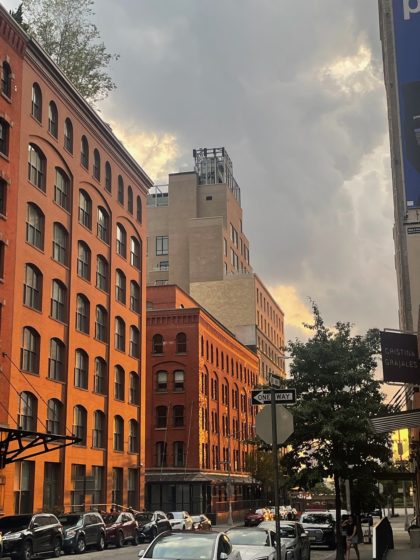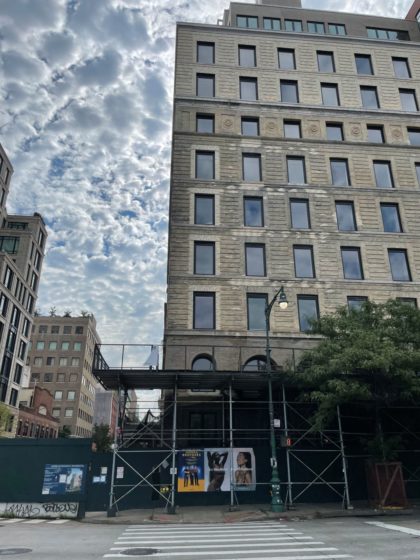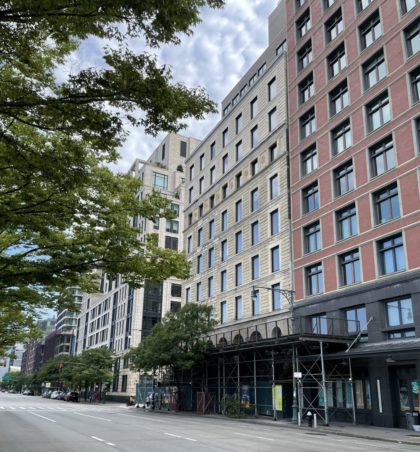67 Vestry comes out from under wraps
67 Vestry, which was a rental for decades before it was purchased in 2018, is just now coming out fully from under wraps. Thanks to P., who sent the dramatic pic of the 40-foot addition from Greenwich. I’m waiting now to see the ground floor reveal, when the arches should come into focus.
It’s come a long way since I was in there last, when the elevator gate had to be heaved shut and the stairs were wrapped in orange plastic netting for safety. But I still don’t get why the facade looks like it hasn’t been cleaned… From what I can tell on the Corcoran website, all the units are spoken for, if not already sold. This past July, unit 6 sold for $24.5 million.
The developer Aby Rosen sold the building in 2018 to Iliad Realty Group and almost all the rent-stabilized tenants took buyouts; one held out and was moved in spring 2019 for what was supposed to be two to three years; they will be relocated to an apartment in the building. Construction started that fall.
The 13 apartments range from one to six bedrooms — the floorplan below is for the 9th floor. The penthouse is listed at $45 million.
The building was designed in 1896 by architect F.P. Dinkelberg (who also designed the Flatiron Building) as a tea and coffee warehouse for the Great Atlantic and Pacific Tea Company — aka the A&P, which eventually became the grocery chain — until the ’60s. The building was then used as artist’s lofts. Residents of the building, who in 2014 led an unsuccessful effort to landmark it, compiled this historic description:
“From the circa 1900 photo of the building (Collections of the Museum of the City of New York), the new A&P warehouse is a handsome palazzo with two-story Romanesque openings for the loading docks, and an extremely fine iron cornice. Its pale brick adds a touch of lightness as to the oversized ground floor windows. The small iron balconies on the east side add an unexpected flourish (they are since removed). It’s thick walls and striated brick patterning convey a hint of medieval fortress, a safe place to store food, come hell or high water.
“In 1910 the building’s new owner hired Frank J. Helmle, of the firm McKim, Meade & White, for the addition of two floors.
“The building was used as artist lofts in the late 1960s and 1970s and was the first to be given a legal certificate of occupancy for residential use in 1977. The 1970s in fact began a new chapter for the building as home and backdrop to internationally recognized artists and composers. It was clearly one of several key centers of Tribeca’s rebirth through art after the destabilization of the neighborhood and massive destruction of the Washington Street Urban Renewal Plan. The sculptor Marisol lived and worked here, as did John Chamberlain, and Robert Wilson (director, sculptor collaborator with Philip Glass on Einstein on the Beach). Wim Wenders filmed part of An American Friend here. Laurie Anderson used it as a backdrop for her album Big Science.”



















